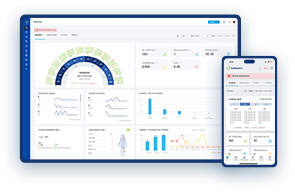
Kaizen Strategies for Safety Management
Continuous Improvement: A Key to Safety
Safety isn’t a one-time deal; it’s an ongoing journey. In a world where work and risks keep changing, sticking to old safety measures just doesn’t cut it. That’s why continuous improvement is crucial. It’s about making safety better, bit by bit, day by day. And when it comes to doing this the smart way, Kaizen steps in.
What is Kaizen?
Imagine trying to improve something and doing it in tiny, manageable steps. That’s Kaizen for you. It’s a Japanese concept that means “change for the better.” It’s not about big, dramatic changes. Instead, it’s about small, regular tweaks that add up over time. Everyone gets involved, from the top bosses to the newest employees, making small changes that make things safer for everyone. It’s straightforward, practical, and it works.
Practical Steps to Apply Kaizen in Safety Management
Applying Kaizen to safety management doesn’t have to be overwhelming. Here’s how to start making continuous, impactful changes:
1. Identify Small Changes: Begin with identifying small, manageable changes that can make a big difference in safety. This could be as simple as improving lighting in dim areas or ensuring all equipment has proper labeling.
2. Engage Your Team: Safety improvement is a team effort. Encourage every employee to contribute ideas, no matter how minor they seem. Create a culture where suggestions are valued and recognized.
3. Implement Regular Safety Walks: Make it a routine for managers or safety committees to conduct regular walkthroughs of the workplace. This helps spot potential safety issues before they become problems.
4. Standardize Successful Changes: When a small change proves effective, make it a standard practice across the organization. Document these changes and share the success stories to encourage more participation.
5. Use Visual Aids: Visual tools like signage, color-coding, and floor markings can effectively communicate safety information and remind employees of new practices.
6. Provide Training and Education: Regularly update your team on safety protocols and the importance of continuous improvement. Training sessions can be a great opportunity to discuss Kaizen and how everyone can contribute.
7. Measure and Adjust: Keep track of the changes made and measure their impact on safety. This data will help you understand what’s working and what needs adjustment. Remember, Kaizen is about continuous improvement, so be prepared to tweak and refine your approaches.
8. Celebrate Achievements: Recognizing both the efforts and achievements in safety improvements fosters a positive environment and encourages ongoing participation. Celebrate the milestones, no matter how small they may seem.
By following these steps, you’re not just applying a methodology; you’re embedding a culture of safety and continuous improvement within your organization. Kaizen shows that even the smallest changes, when applied consistently, can lead to significant improvements in safety and overall organizational health.
Related read:
Our listing of the best EHS Software.

Ramesh Nair is the Founder and Principal Partner of Niyati Technologies, the company behind Safetymint.
He’s a dedicated advocate for workplace safety. Ramesh firmly believes that every individual deserves to return home safely after a day’s work. Safetymint, the innovative safety management software, emerged from this conviction. It’s a platform designed to streamline safety management, empower safety professionals, and enhance safety in workplaces.
Through his blog, Ramesh shares insights, best practices, and innovative solutions for workplace safety. Visit his social media profiles to follow him for regular updates.




